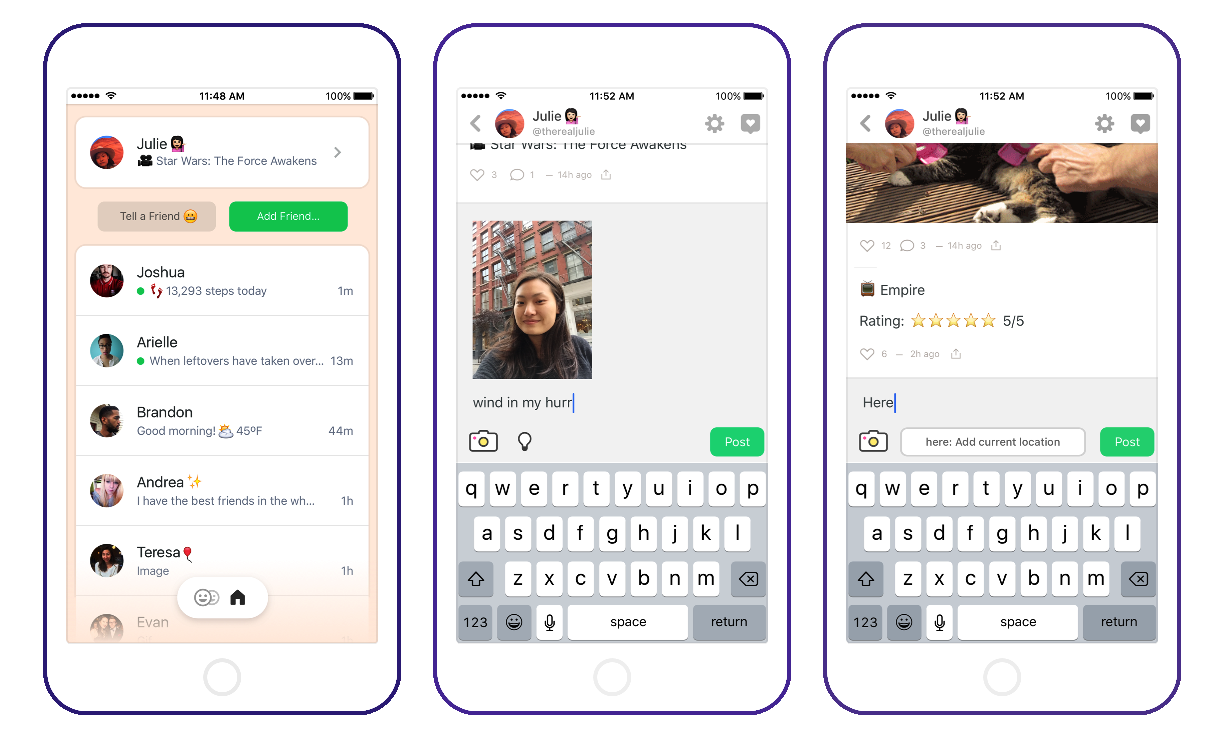These days it’s hard to have a conversation with startup founders who aren’t fixated on their companies becoming the next unicorn or totally demolishing their competitors and taking over the world.
You dominate or you die tends to be the thinking.
"Part of the problem seems to be that nobody these days is content to merely put their dent in the universe. No, they have to f████g own the universe. It’s not enough to be in the market, they have to dominate it. It’s not enough to serve customers, they have to capture them."
Those are the words of David Heinemeier Hansson, co-founder of Basecamp – a simple, 12-year-old project management web application.
While I fully agree with his statement, the reality is that everyone wants to “own” the online experience. But to have any chance in succeeding online, you must first be aware of what’s going on and then work hard to adapt your tactics to the new reality.
The Takeover of the Open Web
Everyday content discovery is being made on platforms like Facebook, Twitter, Reddit, Inbound and the like. It’s not that the open web doesn’t exist, it's simply that big players are working really hard to make it so that you have very little reason to go anywhere else but their website or app to get your fix.
Take Facebook as an example. Leaving aside Internet.org and Free Basics initiatives where Facebook becomes the internet by offering connectivity services, what you see within your news feed is designed to give you every reason to stay on the platform and never leave the walled garden ecosystem.
Likewise, business websites are often messy and it can be hard to find even basic info like a phone number. The solution? Facebook now offers Business Pages, where all of the company pages look nearly identical, relevant information is always consistent, and the opportunity to “live chat” with representatives of the company you’re trying to contact is available for anyone with a Facebook login.

Image via SiliconRepublic
At the same time, viral videos are a way for brands to attract new customers. Youtube used to dominate as the leading platform for uploading and sharing branded videos (even on Facebook). But that all changed when the company came out with its own native video solution and made the videos auto-play when you scroll down your news feed. That made already impressive video view counts grow even bigger and in November the video platform on Facebook reached 8 billion views per day.
All of this and more, including Instant Articles that let you read longer articles without leaving the app, make it increasingly unlikely that active users (all 1.59 billion of them) will look beyond Facebook’s walled garden for finding information on anything in the near future.
For businesses that means, like it or not, they’ll have to be active on Facebook to stay relevant. And the way to stay visible and relevant is to spend money on buying ads on the platform, with the hope that people who click on those ads will turn into customers and fans of your brand page.
The problem with buying ads is that, irrelevant of the platform, ads get more expensive right before and during periods when high sales numbers are forecasted.
Think Christmas and Black Friday or Cyber Monday. The reason for that is because those ads (with highly targeted keywords) work really well and so everyone wants to buy in, driving prices even higher.
Going Beyond Facebook Ads

Paraphrasing Mark Twain, whenever you find yourself being badly out-bid for ads, it’s time to pause and reflect. There will always be someone who’s willing to pay more for ads than you are. Always.
Now this doesn’t mean that you shouldn’t do any paid promotions at all. Not being active on the platforms that most of your customers use only hurts your business more. However, you need to be smart about how and when you spend your budget.
If you look at trending data, you’ll know in advance when ads will be more expensive. Then, you can re-design your campaigns to run, for example, before or right after when everybody else is promoting themselves or coming up with totally new campaigns targeted at different demographics, at different times of the year. That way, you’ll still attract new customers without going broke while attaining them.
Ads aside, there’s so much more that the Facebook platform provides like the aforementioned Facebook auto-playing videos, Instant articles and more. It’s important to take advantage of everything that a given platform has to offer and play around and experiment with its capabilities.
One genius way of getting a better understanding of the people that follow you, is to use the platform's built-in Graph Search capabilities. This tool allows you to find out which pages are followed or liked by people who like your brand. Or find pages liked by people who like your brand and a partner or competitor’s brand). The opportunities for learning are endless and it’s open and free for everyone. It just takes some time and effort. 
Armed with the knowledge that people who like your brand also like X, Y, Z will give you the opportunity to build your strategy around that new knowledge. Your audience shares content from The Verge? Get mentions, buy ads, or partner with them on content.
Or how about an exclusive invite-only Facebook group for your most loyal fans? A place where members can vote on new product ideas, get exclusive offers and receive access to upcoming product launches. That’s what Pura Vida Bracelets did. In 5 hours the group had 4000 members and according to the company: “Our engagement is about 20% and our fans are going NUTZ!!”
The bigger idea behind all of this is to be at your target market’s peripheral vision at all times, on the platforms that they use. Your only limitation is your own imagination.
Twitter, with it’s powerful Twitter Search is another example of a social platform that a lot of people use and that can be used for market research. The advantage being that on that platform is that you’ll be able to search specific keywords, phrases, hashtags and more that are connected with your business and jump right into a conversation. It’s more direct that way.
And then we have Pinterest, Instagram, Snapchat. LinkedIn, Imgur and more. All of those platforms have hundreds of millions of users, including your current and future customers. Not using the platforms that have already gained widespread acceptance is a major missed opportunity.
I could understand you being hesitant to jump into something like Peach that just came out in January because it’s so new and not a lot of people are using etc. But even then I’d argue that it would be a mistake not to at least try out new platforms.
Getting in early will give you the opportunity to test out what works, and shape the tone for how businesses communicate on a given platform, while it still has a relatively small audience. By the time other businesses get onboard, you’ve set the tone , expectations and thus have a big competitive advantage.

Image via Peach
No matter which walled garden you’re in, your first job is to stay engaged and relevant on that platform. You can start by understanding what works on which platforms for the audience that you currently have and the kind of audience you want to attract.
Then, you can combine market research with the knowledge of what generally works in a given platform to build a deeper connection with your customers. Your audience is into Grey’s Anatomy? You better be too. Into NBA, NHL, NASCAR or maybe a team, a driver, a player? All that can be used to to engage with your audience and keep them entertained via the right platforms.
What that looks like for you depends on the capabilities of the platform you’re using. Of the big platforms, Facebook has the most built-in possibilities. You can build apps, have quizzes, host giveaways, blog, share pictures, videos and sell a whole lot more – all in inside the platform. But that doesn’t mean that it’s somehow better or worse than the others.
How to Retain Customers in a Walled Garden

After all that hard work engaging with, learning from and growing your audience, there inevitably comes a time to convert your audience into buying (or repeat) customers. Now the question is what’s the best way to do that?
Sure, you have your own ecommerce store and you can direct traffic from your social accounts to your homepage, where they can finish their buying experience. However, it’s easy for would-be customers to get sucked into the rest of your store and end up browsing around, and then end up not buying. Not good.
As a solution, MVMT Watches and others have found success by using Facebook’s newly available ‘buy’ buttons. That way, customers can finish their buying experience right inside Facebook itself – streamlining the whole experience. Social ‘buy’ buttons are currently available (and powered by Shopify) for Facebook, Twitter and Pinterest. Additionally, Instagram has implemented ads with a “SHOP NOW” button.
Blake Pinsker from MVMT Watches had the following to say about the conversion rate of the buttons:
This is a very similar conversion rate to what we saw at the beginning of the shift to mobile,” he said. “Our mobile conversion rate more than doubled as people got comfortable purchasing from their phones and we think the potential for growth on our Facebook shop is similar as people become more familiar with the platform.
Final Thoughts
Look, I get it. It can be scary to think about how more and more consumers are spending the majority of their time using apps and social platforms that have an inherently closed nature. But it doesn’t mean that the world is coming to end. It simply means that you have to adjust your strategies.
Since most content discovery (whatever that content might be) is happening on social platforms, choose to be a part of those platforms that your customers are using, and learn to use them effectively.
Is your Shopify online store getting more and more traffic from social platforms? It might just be the right time to try out social buy buttons. Plus,the setup is a breeze for Shopify customers. And if it brings in more revenue all the better. You’ve got nothing to lose really, only gains to be had.
And while you’re busy getting new customers, don’t forget that a customer experience only begins after they checkout, it doesn’t end there. So make sure that your after-sales activities and emails are on point.
 About The Author
About The Author
Ott Niggulis is a chef/paramedic/freelance writer who focuses on marketing and CRO. Marketing is a numbers game and he loves numbers. Follow him on Twitter.




